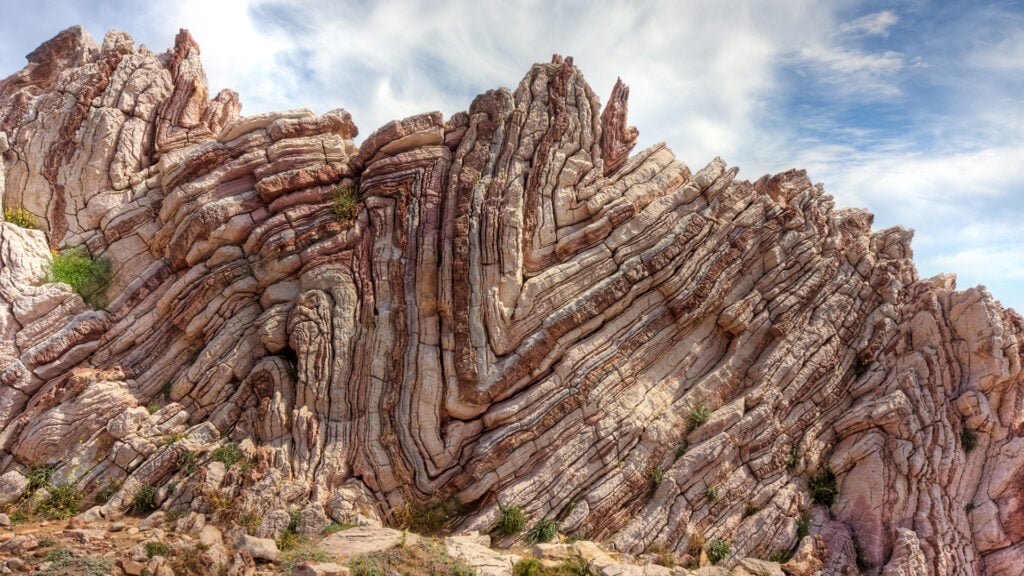Rock types and their properties
Rocks respond to tectonic forces in various ways: some break under pressure, others deform plastically or slide past each other along fault zones. These differences are mainly due to the specific composition of the rocks. The mineralogical makeup of a rock is determined by its formation process, composition, and the temperature and pressure conditions during its formation.
Rocks are categorized into three main types based on their formation: magmatic, sedimentary and metamorphic rocks
- Magmatic Rocks (Magmatites): Formed through the cooling and solidification of magma.
- Metamorphic Rocks (Metamorphites): Metamorphites form when rocks are subjected to changing temperature and pressure conditions. This can be compared to baking a cake: the batter changes its structure while the ingredients remain the same. Similarly, the mineralogy of the rocks changes during metamorphism.
- Sedimentary rocks: These formed by the deposition of material transported by erosion, wind, water, or ice, which then solidifies. They are further divided into:
- Mechanical Sedimentary Rocks: Formed from deposited particles.
- Chemical Sedimentary Rocks: Such as evaporites, which form from the evaporation and crystallization of minerals.
- Organic Sedimentary Rocks: Like coal, which forms from plant material that decomposes under pressure.
The Upper Rhaetian Limestone and its deformation
The station is located at an outcrop of Upper Rhaetian Limestone, a characteristic sedimentary rock from the late Triassic period, formed on the sea floor. Typical of such rocks are the clearly visible layers that represent the individual sedimentary strata.
When we examine the layered structure of the limestone in the context of tectonic deformation, it becomes clear that rocks respond differently to pressure along the layer boundaries. Less stable layers, such as fine-grained limestone layers, tend to deform more easily, while thicker, more stable layers better withstand pressure. As a result, the layers slide past each other, creating characteristic deformation structures such as folds—wave-like bends in the rock layers—or fractures and faults where rock layers are displaced against each other. Such structures can be clearly observed at this outcrop.

The individual layers of the sedimentary rock were tilted, shifted, and deformed by tectonic forces during the alpine orogeny. These traces of deformation are clearly visible at the station. (Image source: Own illustration)

